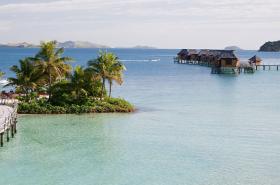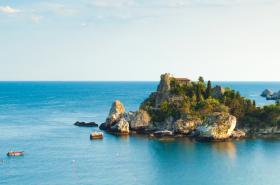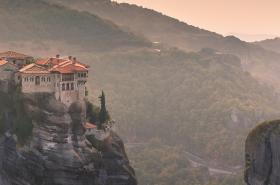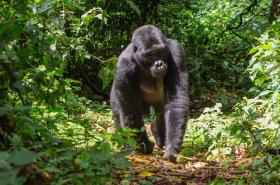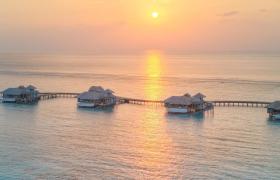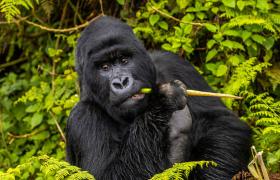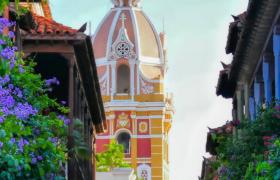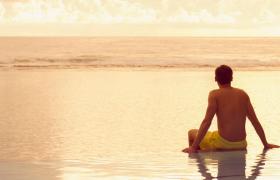Australia is known for its temperate climate, fascinating culture, and interesting fauna. But aside from its rich landscape, Australia is also famous for the Great Barrier Reef, the biggest coral reef system in the world as well as many other great dive sites. Known to attract divers worldwide, the teeming waters of Australia have long been one of the world's top diving spots. Here are the Top 5 dive sites in Australia.
1. Ningaloo Reef, Western Australia
Ningaloo Reef stretches 260 kilometres along the Northwest Cape halfway up Western Australia. Ningaloo Reef is one of the world's largest fringing reefs and is home to a variety of marine life, including the largest fish in the world - the Whale Shark. Growing up to 18 metres in length, these leviathans are regular visitors to the Ningaloo Reef from March to June, when the plankton rich waters draw them close to the reef in search of food.
Whale Sharks are only one of the many seasonal visitors to the Ningaloo Reef. Humpback Whales also inhabit the area from June until November. Manta Rays can be seen along the reef near Exmouth from May to November. As summer arrives, so do the Green, Loggerhead and Hawksbill Turtles to begin their nesting season.
2. Heron Island, Queensland
One of the most accessible places for divers is the World-Heritage-listed Heron Island. Take your pick of 22 dive sites: the Coral Cascades, with football trout and anemones; the Blue Pools, favoured by octopus, turtles, and sharks; Heron Bommie, with its rays, eels, Spanish dancers; and more. The island features around 30 sites within a 15-minute boat ride from the jetty.
More than 70 percent of the reef's species can be found in the waters of the Bommie. You can swim with Wobbegong Sharks, White Tip Reef Sharks, Eagle and Manta Rays, Moray Eels, Parrotfish, Sweetlip and Hussars amongst Staghorn Coral banks, overhangs and several tunnels.
3. Lizard Island, Queensland
Lizard Island is the best spot for divers to explore the famed coral paradise of north Cooktown's Great Barrier Reef. This excellent diving destination hosts a spectacular site of interlocked reefs and coral-ringed isles. As for diving activities, the island offers customised dive boat services around outer and inner reef dive sites.
One of the all-time favourite diving spots is Cod Hole. This diving site is well-known for its underwater inhabitants, including the friendly Potato Cods, the Maori Wrasse, the Emperor, the Red Bass, and many other species. These water creatures are very warm to visitors and happily pose in front of divers' cameras. Divers can also go way below to the site's sandy floor area to watch the fish feeding activities on the surface water. Other famous marine life found in Cod Hole are the White Tip Reef Sharks, Giant Clams, anemones, feather stars, Reef Sharks, and Solomon's Sweetlip.
4. The Whitsunday Islands, Queensland
The 74 breathtaking islands of the Whitsundays offer countless dive sites both among the islands and on the Outer Great Barrier Reef. Snorkelers can explore not just the Outer Reef, but also patch reefs among the islands and rarely visited fringing reefs around many islands.
The Whitsunday Islands have always been among the most wonderful diving sites in the world. Popular dive sites include Blue Pearl Bay, Maureen's Cove, Manta Ray Bay, Hayman Island, Hooks Island, Fairy Reef and Hardy Reef. Manta Rays can be found at the southern end of Bait Reef at Manta Ray Drop-Off during winter. The Stepping Stones, also in Bait Reef, is a great place to see marine life, watch the Gropers, Sweetlips, Coral Trouts, Lion Fish, Moray Eels and more.
5. Rottnest Island, Western Australia
Just 19 kilometres from Perth, this former prison island has excellent snorkelling and more than 100 dive sites.
The diversity of fish and coral species, and the numerous shipwrecks found around the Island, makes Rottnest Island a favourite site for scuba divers and snorkelers in Western Australia. Many species of tropical fish make their home in and around the numerous reefs surrounding Rottnest, making it one of the most fascinating dive and snorkelling sites to be found in such close proximity to a capital city.
The Rottnest Island Marine Reserve has a far greater range of marine plants and animals than that of the mainland coastline. Approximately 400 species of fish and 20 species of coral occur within the Marine Reserve. Fish include: the Western Australian Dhufish, Baldchin Groper, Harlequin Fish, Cobbler, Flathead, Leatherjacket, Samson Fish, Tailor, Butterfly Fish and Moon Wrasse.
Call 13 70 71 or enquire online to speak to one of our travel specialists and begin planning your personalised itinerary.


